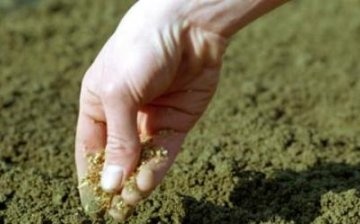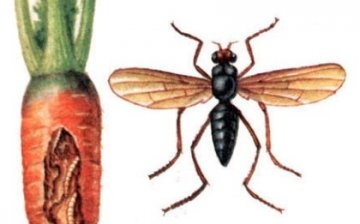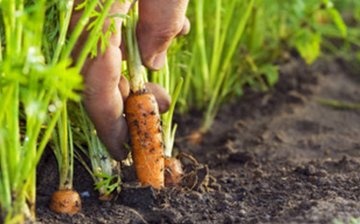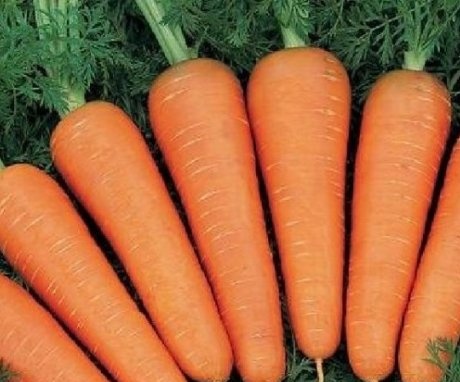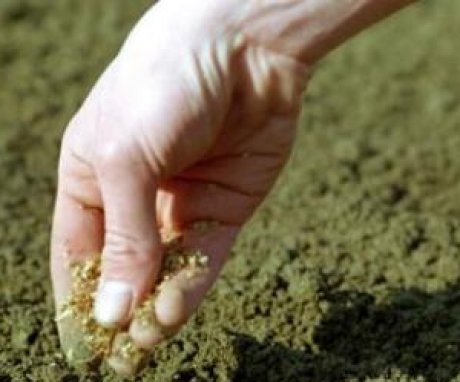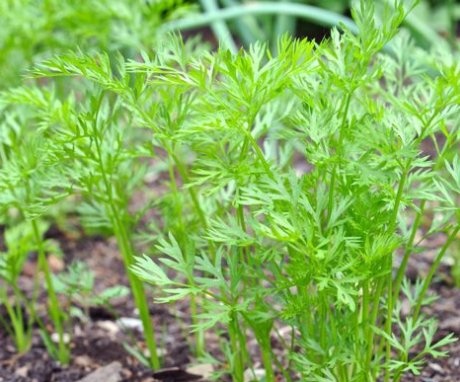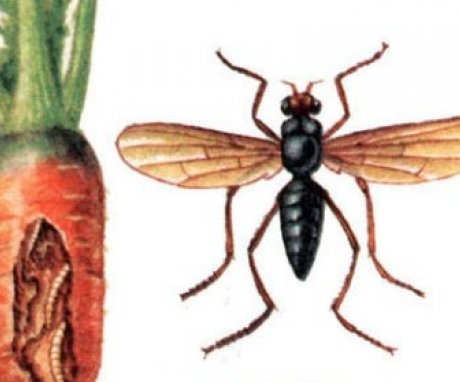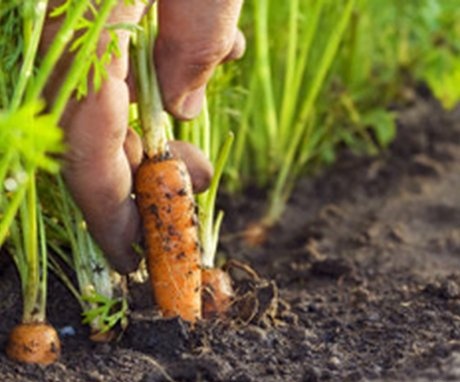Carrot cultivation technology: planting, care and pest control
Carrots are a healthy vegetable that can raise hemoglobin levels. In order to increase the yield of this vegetable, it is necessary not only to know, but also to adhere to the technology of carrot cultivation.
Content:
- Description of carrots
- Planting carrots
- Features of carrot care
- Protecting carrots from diseases and pests
- Harvesting
Description of carrots
Carrots are a fairly cold-resistant vegetable that can easily tolerate frosts at 0 and -3 degrees. That is why the planting of this vegetable is made mostly in early spring... Carrots can germinate at temperatures of 4-6 degrees. This plant will most beneficially rise in the temperature range of 18-25 degrees.
In order for the root crop to fully form and grow, it is necessary for this plant to provide a temperature of 18-21 degrees.
If carrots are grown in conditions of high temperatures and lack of moisture, then their taste will deteriorate significantly. Carrots are quite light-demanding plants. That is why it must be planted in sunny places. Otherwise, this vegetable will grow and develop very poorly.
This plant also needs to provide regular and moderate moisture, which will favorably affect the size of the fruit and its taste. In the event that during the period of formation of the root crop the humidity fluctuates quite sharply, then it will crack. Carrots are characterized by the presence of dissected leaves, which allows them to easily transfer moisture from the air. Also, this plant develops very poorly with a lack of oxygen.
Planting carrots
Planting of this plant can be carried out both in the autumn and in the spring. Carrots are propagated exclusively by seeds. For the spring planting of this vegetable, it must be done in the fall. For this, the soil is dug to a depth of about thirty centimeters. If the soil in which it is planned to plant the carrots is rather heavy and thick, then it is necessary to thin it out with sawdust and sand. In the spring, you can add mineral fertilizers to the soil.
Growing secrets:
- Carrot seeds have a very low germination rate (about 50-60 percent). In order to increase the similarity of a given plant, only large seeds need to be selected. The seeds must be stored for no more than a year, otherwise the level of their similarity may drop significantly.
- In the spring, planting seeds should be done as early as possible, while there is a large amount of moisture in the soil. The optimum temperature for seed germination is + 18- + 25 degrees. But you can plant this plant at lower temperatures. At the same time, you need to be sure that the carrots will not be frozen down to -5 degrees, as they may die.
- After planting the plant, the soil must be compacted, which will allow it to emerge much earlier and better.
- When planting carrots in the autumn, its fruits will ripen by mid-summer.The fruits of this vegetable when planted in autumn are very large and juicy, but they are not subject to long-term storage.
- The most favorable month for planting this vegetable is November. This is due to the fact that there can be no thaw during this period. Otherwise, the carrots may sprout and freeze under the influence of frost.
- The preparation of the beds should be done in advance, before the earth freezes and turns to stone.
- Seeds for planting in the fall do not need to be soaked. They must be dry, otherwise they may germinate in advance. When planting carrots in the fall, the depth of the furrow should be about 1-3 centimeters. The distance between the rows of this plant should be at least 15 centimeters.
- After planting seeds in the ground, they must be sprinkled with a layer of soft and not frozen earth. The soil must be compacted and covered with snow. In the event that there is no snow, the carrots can be covered with foliage or protective film. After the snow melts, you can make a greenhouse, which will significantly accelerate the growth of carrots.
Features of carrot care
First of all, this vegetable needs to provide moderate and timely watering. This plant can easily tolerate drought, but at the same time its fruits become quite tough and have fibers. They can also lose their taste. With excessive watering, excessive growth of tops is noticed, while root crops grow and develop rather poorly.
In the event that the weather is sunny, then watering must be provided 1-2 times a week.
For this purpose it is necessary to use a watering can. It is necessary to pour no more than 3-4 liters of water per square meter. After the start of the root crop phase, the plant must be watered once a week at 10 liters per square meter.
In the event that the top of the fruit of this plant is above the ground, then under the influence of direct sunlight, solanine will accumulate in it. This is the substance that will impart bitterness to the fruit. To avoid this, it is necessary to huddle the carrot while weeding it.
Fertilizing carrots:
- Carrots are quite responsive to mineral fertilizers. They have a beneficial effect on the growth and taste of the fruits of this plant.
- Fertilizers in the form of manure must be applied in the autumn. In this case, the manure must be very well peeled, otherwise it will become a fertile soil for the reproduction of such a pest as a carrot fly.
- The main fertilization for carrots must be done in the fall.
- During the growth of the carrot, it is necessary to make two feeding. The first is produced when 2-3 leaves appear on the plant, and the second - when 3-4 leaves appear. Top dressing is applied by drip irrigation.
In order to avoid various diseases and pests of the plant, it is necessary to thin out the carrots. This action is performed when two or three leaves appear. The distance between individual carrots should be 1 to 2 centimeters. With this procedure, you can significantly increase the growth of fruits and increase the yield of carrots.
Protecting carrots from diseases and pests
In order to avoid significant losses in the quality and quantity of the crop, it is necessary to protect this vegetable from a variety of diseases and pests.
Most often this plant such pests affect:
- Carrot fly.
- Mole.
- Medvedka.
- Aphid.
- Scoops.
- Wireworms.
- Slugs.
Carrot fly larvae are the most dangerous pest of this plant. When affected by this pest, carrot leaves take on a reddish tint and fade very quickly in the sun.
In order for the carrot fly not to lay its eggs in the soil, it is necessary to thin this vegetable in a timely manner.
The carrot fly is also capable of attacking root crops that peek out from the ground. This pest makes moves in root crops, which rot over time.
It is quite difficult to deal with this pest. The carrot fly has two generations per season. The spring generation begins to spoil the harvest from late April to early May. This generation affects the foliage of the plant, which negatively affects its growth and development. In the month of August, the second generation of the carrot fly appears, which is capable of affecting the carrot fruit. As a preventive measure, it is necessary to grow carrots in a very well-ventilated area. At the first signs of the appearance of this pest, it is imperative to treat carrots with insecticides.
Aphids attack carrots during the dry season.
In this case, the leaves of the plant are able to curl up, as a result of which they lag behind in growth. The methods of dealing with this pest are the timely watering of the carrot, as well as its treatment with insecticides. In order to prevent the appearance of a bear, it is necessary to regularly deep plow this vegetable.
Negatively affect the roots of this vegetable such diseases, as:
- Black rot
- White rot
- Fomoz
- Gray rot, etc.
In the event that, when storing this vegetable, it is produced in conditions of high humidity, then bacterial rot can attack it. When affected by this disease, root crops are characterized by sliminess and wateriness, as well as the presence of an unpleasant odor. The causative agents of all diseases of a given plant can be transmitted through the soil, and they develop under the influence of excessive soil moisture.
Harvesting
It is necessary to start harvesting carrots:
- In the autumn, provided that the air temperature drops to + 7- + 8 degrees.
- Harvesting should be done before the onset of frost, since after being in sub-zero temperatures, root crops can deteriorate.
- Bunch carrots must be harvested along with the tops. With the help of the tops, bunches are made from it.
- Varieties that ripen a little later must be harvested in a semi-mechanized way.
- In order to avoid cracking of root crops, it is necessary to ensure that they are not damaged during harvesting.
If the carrot root crops do not have scratches and wounds, then they will be much more resistant to diseases, which will allow them keep for a long enough time... Storage of this vegetable should be carried out in narrow, low piles or in cellars.
The most optimal storage option for this vegetable is refrigerators, which are able to always maintain the optimum temperature. If this vegetable is provided with a temperature of + 2- + 5 degrees, then it will be stored for 2-3 months, and at a temperature of 0- + 1 degrees, its shelf life will last up to 4-6 months.
More information can be found in the video.





